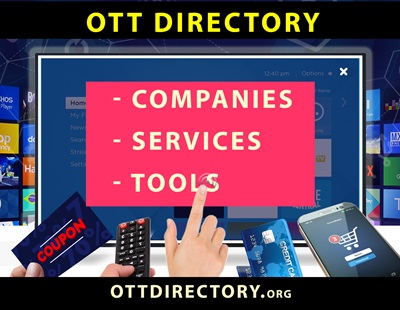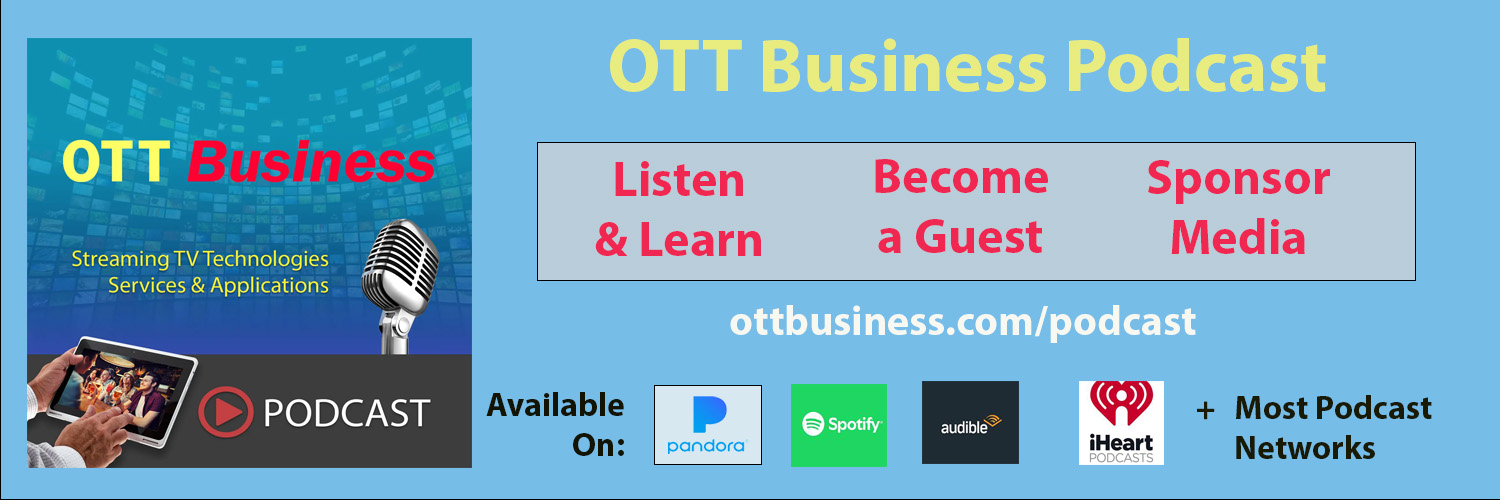Video coder/decoder (codec) design and development companies create and optimize algorithms that compress, encode and decode digital video. These companies develop video codecs that provide efficient, high-quality video delivery across diverse devices and networks. These solutions solve key challenges such as maintaining video quality while minimizing bandwidth usage, ensuring cross-platform compatibility, and supporting real-time streaming with low latency. The tools they provide are equipped with advanced features, including support for multiple codec standards like H.264 and AV1, customization capabilities tailored to specific content and device requirements, and robust security measures such as DRM and encryption. Additionally, they offer scalability to handle varying resolutions and bitrates, comprehensive performance testing, and strong integration support to ensure seamless deployment. Understanding and utilizing video codecs is essential for delivering superior streaming experiences, making it worthwhile to explore how these tools can enhance your OTT services.
Video Codec Design and Development Companies

Video Codec Design and Development Company List
Advantech – Advantech delivers video encoding and decoding hardware solutions, integrating advanced codecs to support high-performance video streaming for OTT platforms.
Arxan Technologies – Arxan Technologies provides video security and codec solutions, focusing on protecting video content and optimizing delivery for OTT services.
Ateme – Ateme provides video compression and delivery solutions to enhance viewer engagement and reduce churn for content and service providers.
Beamr – Beamr develops high-efficiency video compression solutions, including H.264 and HEVC codecs, to enhance video quality and reduce bandwidth for OTT and streaming services.
Bitmovin – Bitmovin offers cloud-based video encoding and decoding solutions that support multiple codecs, ensuring high-quality streaming for OTT and VOD services.
Broadcom – Broadcom designs and develops high-performance video codecs integrated into their semiconductor solutions, supporting OTT and streaming media delivery.
Comprimato – Comprimato offers JPEG2000 and H.265 codec solutions for live and on-demand video streaming, providing high-quality video compression for OTT services.
Elecard – Elecard specializes in developing video codecs and multimedia software for professional video processing, streaming, and OTT applications.
Elemental Technologies (AWS Elemental) – Elemental Technologies, now part of AWS, provides software-based video processing solutions with support for various codecs, enabling scalable OTT and live streaming services.
Enea – Enea offers software solutions for video compression and optimization, enabling efficient video delivery and playback on OTT and streaming platforms.
Evertz – Evertz offers a wide range of media and broadcast solutions, including advanced media asset management and workflow automation systems.
Fraunhofer IIS – Fraunhofer IIS is a leading research institution that develops cutting-edge video and audio codecs, including the xHE-AAC and VVC codecs, for high-efficiency media streaming.
Harmonic – Harmonic VOS offers cloud-based media processing and transcoding solutions for live and on-demand streaming.
Interra Systems – Interra Systems delivers IP video monitoring and quality control solutions designed to ensure video quality and compliance.
Ittiam Systems – Ittiam Systems specializes in video codecs and multimedia solutions, offering high-performance encoding and decoding technologies for OTT and streaming platforms.
MainConcept – MainConcept specializes in developing high-performance video and audio codecs for broadcast, streaming, and OTT platforms, enabling efficient media compression and delivery across devices.
Mux – Mux provides streaming services, transcoding and API-first platform for video streaming and real-time analytics.
NETINT Technologies – NETINT Technologies specializes in developing hardware-accelerated video encoding and decoding solutions, optimizing the efficiency of video delivery for OTT and streaming services.
PathPartner Technology – PathPartner Technology provides advanced video codec development and optimization services, focusing on efficient streaming and playback across diverse devices.
RealNetworks – RealNetworks provides video codec and streaming technologies, including the RealMedia codec suite, which enhances video delivery and playback for OTT services.
Socionext – Socionext delivers advanced video processing and codec technologies, focusing on high-performance solutions for OTT, broadcast, and streaming applications.
Spin Digital – Spin Digital develops high-efficiency video codecs and playback solutions, focusing on ultra-high-definition content for OTT and streaming platforms.
Telestream – Video transcoding, streaming, and clipping solutions for broadcasting and online media industries.
V-Nova – V-Nova provides advanced compression technologies for data, video, imaging, and point-clouds using AI and parallel processing, with industry standard solutions like MPEG-5 LCEVC and VC-6.
Vanguard Video – Vanguard Video provides high-quality, performance-optimized video codec solutions for broadcast, OTT, and streaming media applications.
VisualOn – VisualOn specializes in video playback and codec solutions that optimize streaming quality across various devices and platforms, tailored for OTT services.
VITEC – VITEC provides end-to-end video streaming solutions with advanced video codecs for broadcast, enterprise, and OTT applications, focusing on low latency and high efficiency.
Xilinx (AMD) – Xilinx, now part of AMD, offers AI and video codec solutions that enable low-latency, high-quality video processing for OTT and streaming platforms.
Video Codec Design and Development Company Key Features and Capabilities
Benchmarking and Performance Testing
Look for companies that offer comprehensive benchmarking and performance testing services to ensure the codec meets industry standards and your specific performance metrics. Thorough testing is critical to guarantee that the codec performs efficiently under various conditions, ensuring consistent quality and reliability in real-world applications.
Codec Customization Capabilities
Seek out companies that offer tailored codec solutions to optimize performance based on your unique content, device compatibility, and network conditions. Customization is essential because it allows the codec to be finely tuned to your specific requirements, maximizing efficiency and ensuring optimal video quality across all platforms.
Codec Standards Experience
Ensure the company has a proven track record in developing and optimizing various codec standards, such as H.264, H.265, and AV1, to meet your specific requirements and future-proof your technology stack. Experience with multiple standards is vital as it ensures flexibility and the ability to adapt to the evolving demands of the industry, keeping your services competitive.
Cross-Platform Compatibility
The company should be proficient in designing codecs that are compatible with various devices, operating systems, and platforms, ensuring a seamless user experience across different environments. Cross-platform compatibility is crucial because it guarantees that your content can reach the widest possible audience, regardless of the device or system they are using.
DRM and Security Features
Ensure the codecs incorporate robust security features, such as encryption and Digital Rights Management (DRM) compatibility, to protect content during transmission and storage. Security features are vital to safeguarding your content from unauthorized access and piracy, maintaining the integrity of your service, and protecting your revenue streams.
Industry Standards Compliance
Ensure the company adheres to relevant industry standards and certifications, guaranteeing compatibility and interoperability across different platforms and devices. Compliance with industry standards is important because it ensures that your codec will work seamlessly with other systems and technologies, reducing the risk of integration issues and ensuring broad accessibility.
Integration and Support Services
The company should provide strong integration support, documentation, and ongoing maintenance services to ensure smooth implementation and operation within your existing infrastructure. Comprehensive support is essential to facilitate the deployment process, minimize downtime, and ensure that any issues are promptly addressed, allowing for continuous, uninterrupted service delivery.
Intellectual Property (IP) Rights Management
Choose a company with a clear approach to managing intellectual property, including licensing of patented technologies, to avoid potential legal issues. Effective IP management is critical to protect your business from costly legal disputes and ensure that you have the right to use and distribute the codec without infringement risks.
Media Compression Efficiency
Evaluate the company’s ability to create codecs that achieve high compression ratios without sacrificing video quality, ensuring efficient use of bandwidth and storage. Compression efficiency is crucial because it directly impacts the cost and quality of your service, allowing you to deliver high-quality content while minimizing data usage and storage requirements.
Real-Time Processing
Consider the company’s expertise in developing codecs that support real-time encoding and decoding, which is crucial for live streaming and low-latency applications. Real-time processing is important because it enables smooth and responsive streaming experiences, essential for live events, gaming, and other interactive content that requires minimal delay.
Scalability and Performance Optimization
Assess the company’s ability to develop scalable codecs that maintain high performance across a wide range of resolutions and bitrates, from low to ultra-high definition (UHD). Scalability is key to ensuring that your service can grow and adapt to increasing demand, supporting various content types and formats while maintaining optimal performance.
Video Codec Design and Development Glossary
Advanced Video Coding (AVC) – Also known as H.264, AVC is a video compression standard used for recording, compression, and distribution of video content across various platforms, including OTT services.
Bitrate – The amount of data processed over a given time in a video stream, typically measured in bits per second (bps), affecting the quality and size of the video.
Codec – A portmanteau of “coder-decoder” or “compressor-decompressor,” a codec is a device or software that compresses and decompresses digital video or audio.
Encoding – The process of converting video into a digital format using compression algorithms, allowing it to be efficiently transmitted and stored.
Frame Rate – The number of frames displayed per second in a video, affecting the smoothness and quality of the motion.
High Efficiency Video Coding (HEVC) – Also known as H.265, HEVC is a video compression standard that provides improved video quality and compression efficiency over its predecessor, AVC.
Latency – The delay between the input into a system and the output, critical in live streaming scenarios to ensure real-time delivery of content.
Motion Compensation (MC) – A technique used in video compression to predict and encode the movement of objects between frames, reducing the amount of data required.
Perceptual Quality – The perceived visual quality of video content after compression, influenced by factors such as resolution, bitrate, and compression artifacts.
Real-Time Transport Protocol (RTP) – A network protocol used for delivering audio and video over IP networks, commonly used in streaming and telephony.
Scalability – The ability of a codec to adapt to different levels of quality or resolution, allowing for efficient streaming across various devices and network conditions.
Streaming – The process of transmitting video content over the internet in real time, allowing users to start viewing without downloading the entire file.
Temporal Compression – A video compression technique that reduces file size by only recording changes between frames rather than every frame in its entirety.
Variable Bitrate (VBR) – A bitrate setting that allows a codec to adjust the amount of data used based on the complexity of the video, optimizing quality and file size.
Video Compression – The process of reducing the size of a video file by removing redundant information, enabling efficient storage and transmission.
Video-on-Demand (VOD) – A service that allows users to select and watch video content at their convenience, often utilizing codecs to compress and deliver content efficiently.
Visual Quality – The subjective assessment of video clarity and detail after compression, critical in ensuring a satisfactory user experience.

